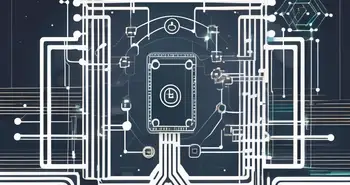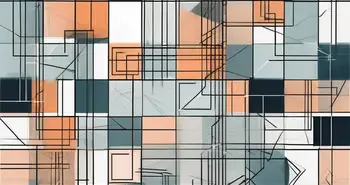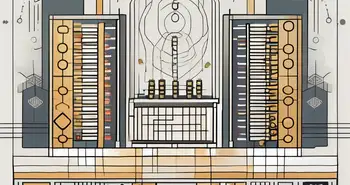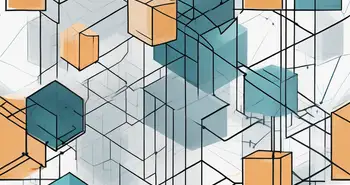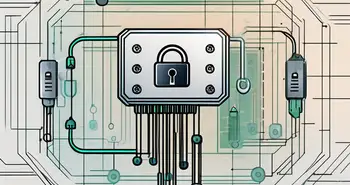Revolutionizing Blockchain: The Power of Modular Architecture
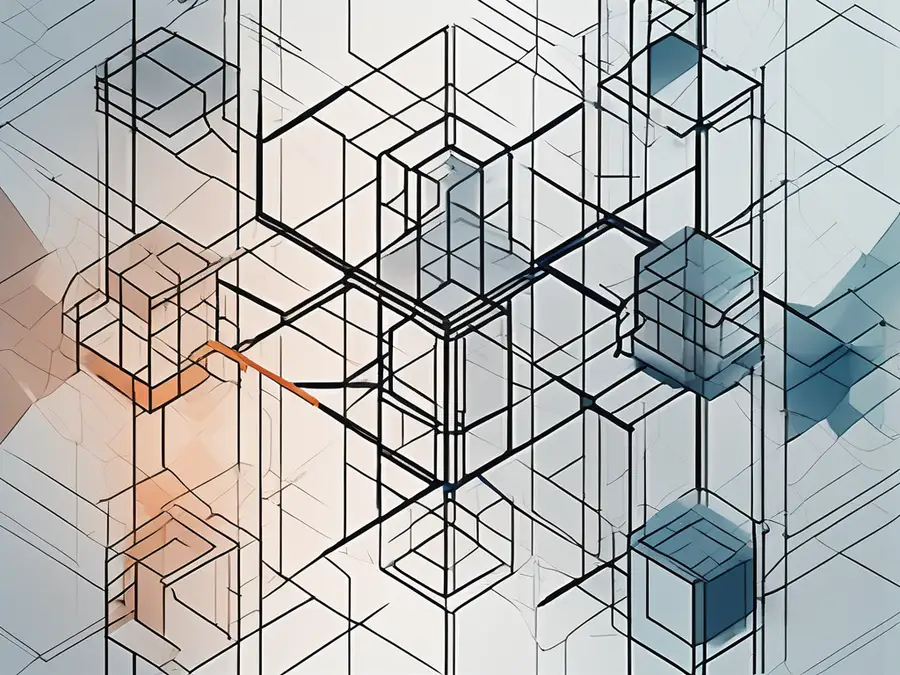
Welcome to the ultimate guide to modular blockchain architecture! In this comprehensive article, we will dive deep into the world of blockchain technology, explore the concept of modular blockchain architecture, discuss its key components, learn how to design a modular blockchain, and glimpse into the future of this innovative approach. So let's get started!
Understanding Blockchain Technology
Blockchain technology is revolutionizing various industries by providing decentralized, transparent, and secure solutions. But before we delve into modular blockchain architecture, let's grasp the basics of blockchain.
The Basics of Blockchain
At its core, blockchain is a distributed ledger that records transactions across multiple computers, ensuring transparency and immutability. Each transaction is bundled into a block, which is cryptographically linked to the previous block, forming a chain.
This decentralized nature eliminates the need for intermediaries, reducing costs, and enhancing security. Moreover, the consensus mechanism ensures all participants reach an agreement on the validity of transactions.
Key Features of Blockchain Technology
Blockchain technology boasts several key features that make it a game-changer in various sectors:
- Decentralization: Blockchain operates on a peer-to-peer network, eliminating central authorities and enabling participants to have equal control.
- Transparency: All transactions recorded on the blockchain are visible to participants, enhancing trust and accountability.
- Security: The cryptographic techniques employed in blockchain provide robust security, preventing unauthorized modifications to the data.
- Immutability: Once transactions are recorded on the blockchain, they become practically immutable, making it extremely difficult to tamper with the data.
Let's dive deeper into the concept of decentralization. In a traditional centralized system, a central authority controls and manages the data and transactions. This central authority acts as a gatekeeper, making decisions on behalf of the participants. However, with blockchain's decentralized architecture, there is no central authority. Instead, every participant in the network has an equal say in the decision-making process.
This decentralized approach brings numerous benefits. Firstly, it eliminates the need for intermediaries, such as banks or payment processors, reducing costs and increasing efficiency. Transactions can be conducted directly between parties, cutting out unnecessary middlemen. This not only saves time but also reduces the fees associated with intermediaries.
Secondly, decentralization enhances security. In a centralized system, a single point of failure can compromise the entire network. However, in a decentralized blockchain network, the data is distributed across multiple computers, making it extremely difficult for hackers to manipulate or corrupt the information. Additionally, the consensus mechanism ensures that all participants in the network agree on the validity of transactions, further enhancing security.
Lastly, decentralization promotes inclusivity and equal control. With traditional systems, power is concentrated in the hands of a few entities. In contrast, blockchain technology empowers all participants, giving them equal control and decision-making authority. This fosters a more democratic and fair ecosystem, where everyone has a voice and can actively participate in the network.
Introduction to Modular Blockchain Architecture
Now that we have a solid foundation in blockchain technology, let's shift our focus to modular blockchain architecture and explore its benefits.
What is Modular Blockchain?
Modular blockchain architecture involves breaking down a blockchain system into modular components, enabling flexibility, scalability, and interoperability.
By dividing the blockchain into smaller, interchangeable modules, organizations can easily upgrade, replace, or add new modules without disrupting the entire system. This modular approach promotes adaptability and evolvability, critical factors for supporting complex applications.
Benefits of Modular Blockchain Architecture
Modular blockchain architecture offers several noteworthy benefits:
- Flexibility: Integrating modular components allows organizations to customize and tailor the blockchain system to their specific needs, enhancing flexibility.
- Scalability: With modular architecture, organizations can effortlessly scale their blockchain networks by adding or removing modules, ensuring seamless growth.
- Interoperability: Modular components can be designed to interact with external systems, fostering interoperability with existing infrastructure.
- Efficiency: By isolating modules, organizations can improve the performance of specific functionalities without affecting the overall blockchain network.
Personal Advice: When designing a modular blockchain architecture, ensure that each module is designed with interoperability in mind. This will enable seamless integration with other modules and external systems, maximizing the benefits of modularity.
Components of Modular Blockchain Architecture
Now that we understand what modular blockchain architecture entails let's explore the key components that make up this innovative approach.
Nodes and Network
Nodes are the individual computers that maintain a copy of the blockchain and participate in the consensus process. In a modular blockchain architecture, nodes can be tailored based on specific roles and functionalities, enhancing efficiency.
The network refers to the connection between the nodes, enabling them to communicate and synchronize the blockchain data.
Consensus Mechanism
The consensus mechanism is the key to achieving agreement among nodes on the validity of transactions. In modular blockchain architecture, organizations can select and customize consensus mechanisms based on their requirements.
Popular consensus mechanisms include Proof of Stake (PoS), Delegated Proof of Stake (DPoS), and Practical Byzantine Fault Tolerance (PBFT).
Smart Contracts and DApps
Smart contracts are self-executing contracts with predefined rules encoded into the blockchain. In modular blockchain architecture, organizations can develop and deploy smart contracts tailored to their specific needs.
DApps, or decentralized applications, are software applications that interact with blockchain networks. Modular architecture allows organizations to build DApps using interchangeable modules, enhancing flexibility and functionality.
Designing a Modular Blockchain
Designing a modular blockchain requires careful consideration and planning to ensure the system meets the desired objectives. Let's explore the steps involved in designing a modular blockchain.
Steps in Designing a Modular Blockchain
1. Identify Use Cases: Determine the specific use cases and requirements for your blockchain system.
2. Break Down Functionality: Divide the blockchain system into modular components based on specific functionalities.
3. Establish Interconnections: Ensure the modules can interact with each other seamlessly, promoting interoperability.
4. Design Interfaces: Create well-defined interfaces between modules to facilitate communication and data transfer.
5. Implement Upgradeability: Incorporate mechanisms to easily upgrade, replace, or add new modules without disrupting the entire system.
Considerations for Scalability and Security
Scalability and security are crucial aspects when designing a modular blockchain. Here are some considerations:
1. Scalability: Plan for future growth by designing modules that can be easily added or removed.
2. Security: Implement robust security measures, such as encryption and access controls, to protect the integrity and confidentiality of data.
Personal Story: When I was implementing a modular blockchain architecture for a financial institution, we faced the challenge of ensuring seamless scalability while maintaining stringent security measures. By carefully designing and testing the modular components, we were able to achieve a balance between scalability and security, empowering the institution to handle increasing transactions while ensuring data privacy and integrity.
The Future of Modular Blockchain Architecture
As blockchain technology continues to evolve, so does the concept of modular blockchain architecture. Let's explore some emerging trends and the challenges and opportunities that lie ahead.
Emerging Trends in Modular Blockchain
1. Interoperability Standards: Efforts are underway to establish interoperability standards that enable seamless communication between different blockchain networks, fostering collaboration and innovation.
2. Modular Privacy Solutions: Privacy-focused modular solutions are being developed to enhance confidentiality while leveraging the benefits of modular architecture.
3. Cross-Chain Functionality: Advancements in cross-chain technology aim to enable the exchange of assets and data between different blockchain networks, broadening the possibilities for modular blockchain architecture.
Challenges and Opportunities for Modular Blockchain
While modular blockchain architecture offers numerous advantages, it also poses certain challenges:
1. Standardization: Establishing standardized protocols and interfaces across modular blockchain systems is essential for seamless integration and widespread adoption.
2. Security Considerations: As organizations decentralize their systems, they must remain vigilant in addressing security risks and vulnerabilities.
FAQ – Frequently Asked Questions
Q: What is the main benefit of modular blockchain architecture?
A: The main benefit of modular blockchain architecture is flexibility, scalability, and interoperability. By breaking down the system into interchangeable modules, organizations can easily customize, scale, and integrate their blockchain networks.
Q: How can modular blockchain architecture enhance security?
A: Modular blockchain architecture allows organizations to implement security measures on a per-module basis. This isolation prevents security breaches from affecting the entire blockchain network.
Q: Can existing blockchain systems adopt modular architecture?
A: Yes, existing blockchain systems can adopt modular architecture by strategically redesigning and incorporating modular components into their existing infrastructure.
Q: How can modular blockchain architecture revolutionize industries?
A: Modular blockchain architecture can revolutionize industries by providing customizable, scalable, and interoperable solutions. This enables organizations to build complex applications, streamline processes, and unlock new business opportunities.
With this ultimate guide to modular blockchain architecture, you now have a solid understanding of the concepts, benefits, components, and design considerations involved. As the blockchain landscape continues to evolve, modular architecture promises to be a key driver of innovation, empowering organizations to unlock the full potential of blockchain technology.
Ready to experience the future of trading with the flexibility, scalability, and interoperability of modular blockchain architecture? Look no further than Morpher.com, where you can trade across a multitude of markets with zero fees, infinite liquidity, and the safety of a non-custodial wallet. Embrace the power of fractional investing, short selling, and up to 10x leverage to amplify your trades. Join the revolution and Sign Up and Get Your Free Sign Up Bonus today to transform your investing journey with Morpher's unique trading platform built on the Ethereum Blockchain.

Disclaimer: All investments involve risk, and the past performance of a security, industry, sector, market, financial product, trading strategy, or individual’s trading does not guarantee future results or returns. Investors are fully responsible for any investment decisions they make. Such decisions should be based solely on an evaluation of their financial circumstances, investment objectives, risk tolerance, and liquidity needs. This post does not constitute investment advice.

Painless trading for everyone
Hundreds of markets all in one place - Apple, Bitcoin, Gold, Watches, NFTs, Sneakers and so much more.

Painless trading for everyone
Hundreds of markets all in one place - Apple, Bitcoin, Gold, Watches, NFTs, Sneakers and so much more.


